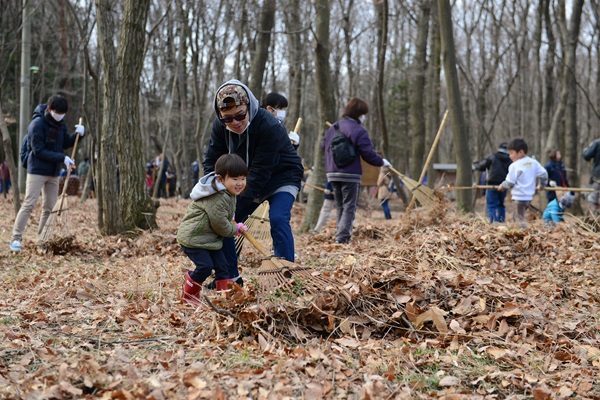
Rome - Three new sites in Asia are the latest to have been formally recognized as Globally Important Agricultural Heritage Systems (GIAHS), underlining the importance of the continent’s centuries-old agricultural practices in feeding the world’s growing population and combating climate change and biodiversity loss.
The sites - a unique rain-fed fig growing region in Iran, an area famous for using fallen leaves as compost for agriculture in suburban Tokyo and a system breeding beef cattle with unique genetic preservation practices in western Japan - were designated during a meeting of the GIAHS Scientific Advisory Group taking place in Valencia, Spain this week (4-7July).
Under the flagship programme of the Food and Agriculture Organization of the United Nations (FAO), the selection criteria stipulate that sites must be of global importance, have value as a public good, supporting food and livelihood security, agro-biodiversity, sustainable knowledge systems and practices, social values and culture as well as outstanding landscapes. Recognizing these sites also spurs communities to continue sustainably managing these jewels of biodiversity and tradition.
With the latest additions to the global agricultural heritage systems list, FAO's worldwide agricultural heritage network now consists of 77 systems in 24 countries around the globe. The programme recently held a major event to award certificates to the most recently designated sites and using immersive experiences to celebrate the diversity of GIAHS systems worldwide
Iran’s unique rainfed fig growing area
The Estahban Rainfed Fig Orchards Heritage System, located in southwestern Iran’s Fars province, is one of the world’s most important areas for rainfed fig production. The communities living in this mountainous part of the country have been cultivating unique fig gardens for at least 250 years, using precious and ancient varieties of the fruit. They use a distinctive and historic system of stone and clay constructions to channel the water to the roots of the trees, making an important contribution to combating erosion and desertification in this region of extreme temperatures.
The cultivation of rainfed figs plays a vital economic and social role in the region, providing livelihoods for thousands of families, directly and indirectly and even providing food for both domestic and wild animals. Communities from the county’s main city regularly spend a month or more in the fig gardens each year, helping to pick the fruit.
Traditional system in suburban Tokyo
The Fallen Leaves Compost Agroforestry System in Musashino Upland in the peri-urban area of Tokyo combines traditional agriculture, forestry and fishing industry. To address the low nutritional content of the soil and scarcity of water, the local communities have developed a practice of using fallen leaves from the forest as compost to plough into the fields, creating highly productive conditions for the cultivation of agricultural products including sweet potatoes, spinach and taro.
What makes this system all the more remarkable is that its sustainable agriculture makes full use of ecological functions despite its location in the suburbs of one of the world’s megacities. The history of the system goes back to the 1600s, when cultivation of the plateau began in order to provide food for the rapidly growing population of Edo, as the capital was then called. To this day, the farming communities stick to the traditional method of composting using fallen leaves, without which, they say the farming they practice would be impossible.
Rice and cattle thrive together in western Japan
The Integrated Farming System for Harmonizing People and Cattle is located in mountainous, thickly forested Mikata district of western Japan’s Hyogo prefecture. Rice is the main crop here, with many of the paddy fields set amid hillside terraces. These are fringed by soft grass, which together with rice straw, provides ideal feed for the area’s 2,000 head of Tajima breeding cattle.
Tajima Beef, known as Kobe beef in the market, is a type of wagyu beef which is a distinctive product of this area. It is nurtured in the supportive environment provided by the rice farming methods, which also offer a habitat for many rare species of flora and fauna including amphibians and a rare golden eagle. The farmers living here have been passing on their remarkable practices for preserving and improving the genetic resources of the cattle for many generations and are committed to following their ancestors’ path to sustainable agriculture.